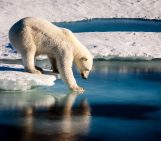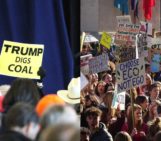
The world we live in today has innumerably more career options than our parents and their parents did. But women and young girls continue to be a minority when it comes to careers in science. Experts call this the “STEM Gap”, where STEM stands for Science, Technology, Engineering and Mathematics. According to a UNESCO report, women still only make up 28% of the STEM workforce.
Two of the leading reasons for this are (1) inflexible, exclusionary, male-dominated cultures that aren’t supportive of or attractive to women and minorities (2) girls have fewer role models to inspire their interest in these fields, seeing limited examples of women scientists in media and popular culture.
“Even today, in the 21st century, women and girls are side-lined in scientific fields because of their gender. Women need to know they have a place in science, and that they have a right to share in scientific progress,” – Audrey Azoulay, UNESCO Director-General
This February, the European Geosciences Union is celebrating the International Day for Women and Girls in Science, all month! We spoke with many women to understand what drives them to excel in their scientific field and how other young girls and women can embrace careers in science. Read on to hear their stories!
 Ellen Wohl, Professor of Geology, Colorado State University, USA: I’m a river scientist who studies physical process and form in rivers and how these interact with biotic communities, biogeochemistry, and human communities. I enjoy both basic scientific research and writing about science for non-scientists who are interested in natural history and the environment. I’m passionate about my work because I think expanding our understanding and awareness of river ecosystems is critical to environmental and societal sustainability.
Ellen Wohl, Professor of Geology, Colorado State University, USA: I’m a river scientist who studies physical process and form in rivers and how these interact with biotic communities, biogeochemistry, and human communities. I enjoy both basic scientific research and writing about science for non-scientists who are interested in natural history and the environment. I’m passionate about my work because I think expanding our understanding and awareness of river ecosystems is critical to environmental and societal sustainability.
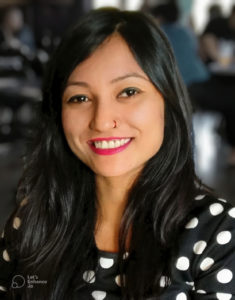 Antara Dasgupta, Research and Technology Associate, Luxembourg Institute of Science and Technology, Luxembourg: I am an interdisciplinary scientist working at the intersection of AI, EO, hydrology, and natural hazards, focusing on improving global flood resilience using data and physics. I love building tech solutions for good and am excited to build a more inclusive community for future scientists!
Antara Dasgupta, Research and Technology Associate, Luxembourg Institute of Science and Technology, Luxembourg: I am an interdisciplinary scientist working at the intersection of AI, EO, hydrology, and natural hazards, focusing on improving global flood resilience using data and physics. I love building tech solutions for good and am excited to build a more inclusive community for future scientists!
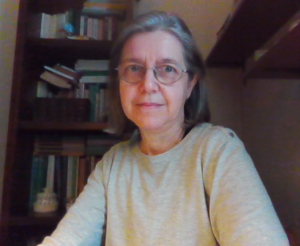 Federica Migliaccio, Full Professor of Geodesy and Geomatics, Politecnico di Milano, Italy: I’m a researcher in satellite geodesy. With my team I work on the determination of Earth gravity field models from satellite data, and on the proposal of innovative quantum gravimetry missions. I also enjoy my role as a teacher, passing on knowledge and inspiring (and being inspired by) a new generation of young and dedicated researchers.
Federica Migliaccio, Full Professor of Geodesy and Geomatics, Politecnico di Milano, Italy: I’m a researcher in satellite geodesy. With my team I work on the determination of Earth gravity field models from satellite data, and on the proposal of innovative quantum gravimetry missions. I also enjoy my role as a teacher, passing on knowledge and inspiring (and being inspired by) a new generation of young and dedicated researchers.
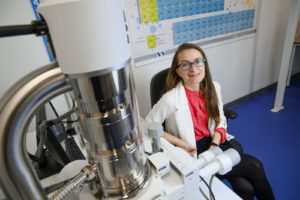 Maria McNamara, Professor of Palaeontology, University College Cork: I’m a palaeobiologist working on the preservation of soft tissues in fossils. I love using modern high-tech approaches to study the microstructure and chemistry of fossil remains and doing fossilization experiments to try to understand the limits of the fossil record. It’s also really fun to apply new learnings from fossils to other fields of study!
Maria McNamara, Professor of Palaeontology, University College Cork: I’m a palaeobiologist working on the preservation of soft tissues in fossils. I love using modern high-tech approaches to study the microstructure and chemistry of fossil remains and doing fossilization experiments to try to understand the limits of the fossil record. It’s also really fun to apply new learnings from fossils to other fields of study!
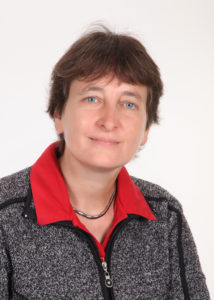 Heidi Kreibich, Head of Working group ‘Flood risk and climate adaptation’ and Lecturer, Humboldt-Universität zu Berlin: I seek solutions to societal challenges related to hydrological extremes under global change. Recently, I led a large international collaborative effort as part of the IAHS Panta Rhei Initiative, which found that flood and drought management strategies, while generally effective, are usually not designed to cope with unprecedented events that could increase with climate change. I find it particularly fascinating to analyse the feedbacks of physical and socio-economic processes in human-water systems and to work in an interdisciplinary field.
Heidi Kreibich, Head of Working group ‘Flood risk and climate adaptation’ and Lecturer, Humboldt-Universität zu Berlin: I seek solutions to societal challenges related to hydrological extremes under global change. Recently, I led a large international collaborative effort as part of the IAHS Panta Rhei Initiative, which found that flood and drought management strategies, while generally effective, are usually not designed to cope with unprecedented events that could increase with climate change. I find it particularly fascinating to analyse the feedbacks of physical and socio-economic processes in human-water systems and to work in an interdisciplinary field.
Lee-Anne 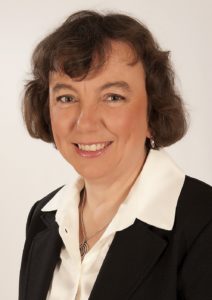 McKinnell, Research, Development and Innovation Executive, South African National Space Agency (SANSA): I’m a Space Science Researcher turned Management Executive. I am passionate about the value chain of Space Weather from Research to Operations, skills development in Africa and all things space science. My background is in ionospheric physics, and recently I have been leading a regional project to successfully develop 24/7 operational space weather capability for Africa. It is important to me that the value proposition of science is understood as a fundamental requirement for solution driven applications.
McKinnell, Research, Development and Innovation Executive, South African National Space Agency (SANSA): I’m a Space Science Researcher turned Management Executive. I am passionate about the value chain of Space Weather from Research to Operations, skills development in Africa and all things space science. My background is in ionospheric physics, and recently I have been leading a regional project to successfully develop 24/7 operational space weather capability for Africa. It is important to me that the value proposition of science is understood as a fundamental requirement for solution driven applications.
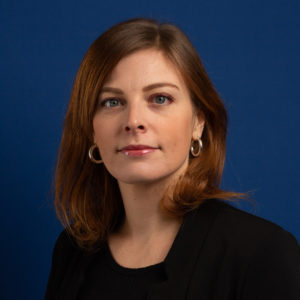 Silvia De Angeli, Assistant Professor, University of Genoa: I’m an environmental engineer, and disaster risk expert. I work to better understand and describe complex multi-hazard disaster risk scenarios, applying an interdisciplinary approach and integrating quantitative and qualitative methodologies to foster disaster risk reduction and sustainable development. I’m also the Early Career Scientist (ECS) Representative of the Natural Hazard Division of EGU. When I am not busy with disasters, I dedicate myself to singing, practicing sports, and spending good time with my friends. I’m proud to be a woman in science!
Silvia De Angeli, Assistant Professor, University of Genoa: I’m an environmental engineer, and disaster risk expert. I work to better understand and describe complex multi-hazard disaster risk scenarios, applying an interdisciplinary approach and integrating quantitative and qualitative methodologies to foster disaster risk reduction and sustainable development. I’m also the Early Career Scientist (ECS) Representative of the Natural Hazard Division of EGU. When I am not busy with disasters, I dedicate myself to singing, practicing sports, and spending good time with my friends. I’m proud to be a woman in science!
Marleen de R uiter, Asst. Professor, Institute for Environmental Studies (IVM) at the VU University Amsterdam: I’m an assistant professor in multi-hazard risk, interested in all types of dynamics related to multiple disasters and really enjoy working in multi- and interdisciplinary groups of both researchers and stakeholders. Additionally, I’m EGU’s science officer of the multi-hazard sub-division, and working group co-lead of RiskKAN’s Early Warning Systems for System Risk working group. I’m very proud to be a woman in STEM!
uiter, Asst. Professor, Institute for Environmental Studies (IVM) at the VU University Amsterdam: I’m an assistant professor in multi-hazard risk, interested in all types of dynamics related to multiple disasters and really enjoy working in multi- and interdisciplinary groups of both researchers and stakeholders. Additionally, I’m EGU’s science officer of the multi-hazard sub-division, and working group co-lead of RiskKAN’s Early Warning Systems for System Risk working group. I’m very proud to be a woman in STEM!
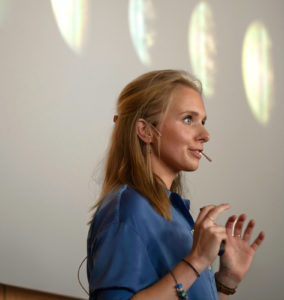 Anna Gülcher, Postdoctoral researcher at the California Institute of Technology and NASA Jet Propuslion Lab, Pasadena, USA: I am a planetary scientist who uses computational techniques to better understand the interior processes that shape rocky planets. I particularly aim to contribute to ESA’s/NASA’s future space missions to our neighbouring planet Venus, which will answer key questions about the requirements of an (in)habitable planet. I enjoy working on the verge of scientific and technological process, collaborating with scientists around the world, and communicating science to others in an accessible and visually attractive way!
Anna Gülcher, Postdoctoral researcher at the California Institute of Technology and NASA Jet Propuslion Lab, Pasadena, USA: I am a planetary scientist who uses computational techniques to better understand the interior processes that shape rocky planets. I particularly aim to contribute to ESA’s/NASA’s future space missions to our neighbouring planet Venus, which will answer key questions about the requirements of an (in)habitable planet. I enjoy working on the verge of scientific and technological process, collaborating with scientists around the world, and communicating science to others in an accessible and visually attractive way!
Barbara Fiałiewicz-Kozieł, Adam Mickiewicz University in Poznań: I am an expert in environmental geochem istry and palaeoecology. I also serve as Anthropocene Working Group voting member and leader of GSSP candidate study. Presently I am looking for an evidence of Anthropocene stratotype and my study site – Na Równi pod Śnieżką peatland is a candidate for Golden Spike.
istry and palaeoecology. I also serve as Anthropocene Working Group voting member and leader of GSSP candidate study. Presently I am looking for an evidence of Anthropocene stratotype and my study site – Na Równi pod Śnieżką peatland is a candidate for Golden Spike.
Thank you to everyone who shared their science story with us. This blog features just a few of the exceptional women we spoke to, so don’t forget to follow us on social media (Twitter, Facebook, LinkedIn, Instagram, Reddit and Mastodon) to hear from all our Women Behind the Science! And if you have your own story to share, join our EGU campaign on social media by telling us about your science and tagging us with #MyScienceStory and #WomenInScience

